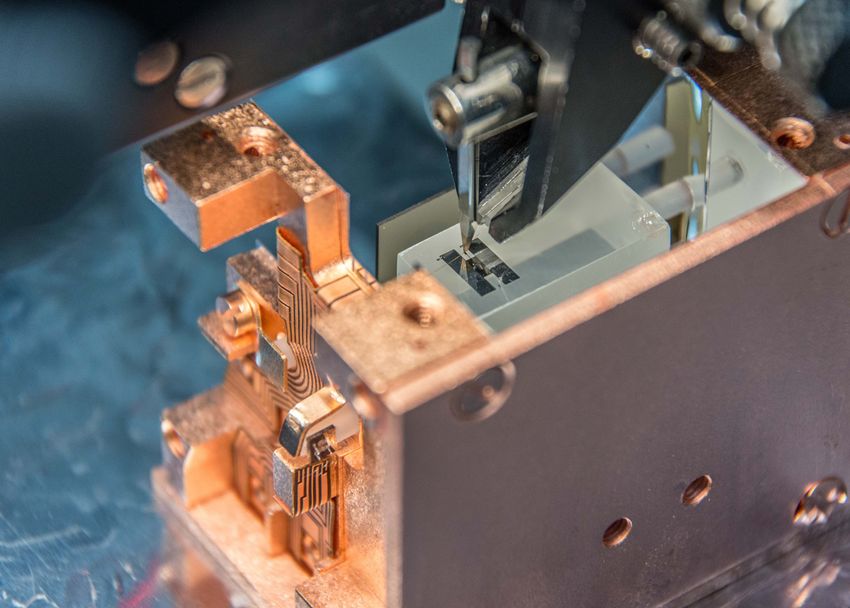Detecting dark matter particles is a challenge: According to theoretical models, these particles would interact extremely rarely and then only very weakly with known matter. And it is precisely these events that a detector must be able to detect. The way CRESST detectors work is based on a sophisticated concept: a crystal cube of calcium tungstate (CaWO4), about 2 centimeters in size, equipped with two sensors for temperature and light.
The key for dark matter detection: superconducting materials
When a dark matter particle hits one of the atoms in the crystal, thermal energy and light are released. Both signals can be measured using TES (Transition Edge) sensors, which have superconducting properties. In some materials, below a certain temperature, there is no electrical resistance, and current flows unhindered. If the temperature suddenly rises due to a collision, the resistance increases - and this difference can be measured.
The challenge: Interactions of light dark matter particles release in our detectors tiny energies, in the range of some 10 electronvolts (eV). “These need to be precisely determined to study dark matter properties”, explains MPP scientist and CRESST spokesperson Federica Petricca. “Therefore, the detectors response must be precisely known, i.e., calibrated.” So far, the scientists have used sources of gamma radiation for this purpose. However, the typical energy quanta released are now too large for the sensitive CRESST detectors.
New method based on neutron capture
A new method, now successfully exploited in CRESST, takes a fundamentally different approach: It uses a neutron source. When tungsten nuclei in the crystal capture a neutron, unstable nuclei are produced. Some of these de-excite emitting a very energetic gamma particle. “This, however, escapes our detectors, but the emitting nuclei recoil themselves, exactly as they would when hit by a dark matter particle”, says Federica Petricca. “This releases a small amount of energy that we know – and can use to accurately calibrate our sensors.”
“Over the past years, we’ve been developing ultra-sensitive detectors”, Federica Petricca continues. “The precise understanding of the detector response at these extremely low energies is the only way to exploit their full potential.”
